Results 9,901 to 9,910 of 12094
Thread: Anandtech News
-
09-25-19, 04:57 PM #9901
Anandtech: GlobalFoundries Unveils 12LP+ Technology: Massive Performance & Power Impr
GlobalFoundries has introduced its 12LP+ fabrication process that relies on the groundwork set by its 14LPP and 12LP technologies and provides significant improvements when it comes to performance, power, and area (PPA) scaling. The specialty foundry positions the technology for developers of chips for cloud and edge AI applications.
GlobalFoundries’ 12LP+ manufacturing technology builds upon the company’s 12LP process yet enables a 20% increase in performance (at the same power and complexity) or a 40% reduction in power requirements (at the same clocks and complexity) as well as a 15% improvement in logic area scaling when compared to 12LP platform. Among other things, 12LP+ supports 0.5V SRAM bit cells (which probably use IP that the company designed for its 7 nm nodes). In addition, GF developed a new 2.5D interposer that enables 12LP+ SoCs to work with HBM memory.
The foundry says that its 12LP+ uses a mature design and production ecosystem and provides advantages comparable to those of 7 nm-class fabrication process. Meanwhile, significant improvements and a new PDK point to new design libraries along with numerous new features, which means that GlobalFoundries’ clients will have to make significant investments in order to take advantage of 12LP+. Those investments will still be 50% lower than the cost of transition to a 7 nm-class technology, according to GlobalFoundries.Advertised PPA Improvements of New Process Technologies
Data announced by companies during conference calls, press briefings and in press releasesGlobalFoundries 12LP+
vs 12LPP12LP
vs 14LPP14HP
vs 14LPPGF's 7nm Gen 1
vs 14LPPPower 40% - ? >60% Performance 20% 10% ? >40% Area Reduction 15% 15% ? >50%
Michael Mendicino, vice president of Digital Technology Solutions at GF, said the following:To speed up development of 12LP+ chips for its clients, GlobalFoundries has asked Arm to design Arm Artisan physical IP and POP IP required by AI-focused SoCs. That IP is said to be compatible with 12LP. Meanwhile, the 12LP+ PDK is already available and several clients have begun to design chips using the technology. GlobalFoundries expects its customers to tape out the first 12LP+ SoCs sometimes in the second half of 2020 and produce them in volume in 2021.
“Our 12LP+ solution already offers clients a majority of the performance and power advantages they would expect to gain from a 7nm process, but their NRE (non-recurring engineering) costs will average only about half as much, a significant savings. Additionally, because the 12 nm node has been running longer and is much more mature, clients will be able to tape-out quickly and take advantage of the growing demand for AI technology.”
GlobalFoundries will manufacture 12LP+ chips using deep ultraviolet (DUV) lithography with argon fluoride (ArF) excimer lasers operating on a 193 nm wavelength at its Fab 8 in New York, USA. Presumably, the company will use the same equipment that is currently used to make SoCs at 12LP and 14LPP nodes.
Related Reading:
- GlobalFoundries Adds 12LP Process for Mainstream and Automotive Chips; AMD Planning 12LP CPUs & GPUs
- GlobalFoundries Weds FinFET and SOI in 14HP Process Tech for IBM z14 CPUs
- GlobalFoundries Stops All 7nm Development: Opts To Focus on Specialized Processes
- Change of Strategy: A New GlobalFoundries CEO in Dr. Thomas Caulfield
- Samsung Details 11LPP Process Technology: 10 nm BEOL Meets 14 nm Elements
Source: GlobalFoundries
More...
-
09-26-19, 01:31 AM #9902
Anandtech: Intel Announces SSD 665p: Denser, Faster QLC NAND
Intel's Memory and Storage Day event today in South Korea was mostly focused on enterprise and datacenter products, but they did announce an upcoming consumer SSD: The Intel SSD 665p. This is the successor to the Intel 660p, the first and most successful consumer SSD to use four bit per cell (QLC) NAND flash memory. The 665p isn't a major update: it keeps the same Silicon Motion SM2263 4-channel controller but updates the NAND to Intel's second-generation 96-layer 3D QLC NAND. This newer QLC keeps the same 1024Gb per-die capacity while shrinking overall die size, so we don't expect any change to the range of drive capacities offered nor any major performance changes—but it may lower prices a bit.
Intel showed off the 665p with a live demo pitting the 1TB 660p against a 1TB 665p prototype with pre-production firmware, each installed in otherwise identical ASUS notebooks. Intel used a beta version of CrystalDiskMark 7 to illustrate the 665p's performance: 40-50% improvement to sequential transfer speeds and about 30% faster random access speeds.
Caveats: given the short test duration and relatively empty state of the drives, these numbers are measurements only of the SLC cache performance. It's not clear how much the worst-case write speeds to QLC have changed, and that's where the 660p falls far behind TLC based SSDs. The sequential IO numbers Intel showed for the 660p are also well below what we've measured with the 660p on our own testbed using CDM 7, so the sequential IO improvement might be more along the lines of 20% rather than 40-50%. Our testing of the Intel 660p also showed that it can reach similar speeds of 1.7-1.8GB/s in sequential transfers with a high enough queue depth, so the 665p's improvement here may amount to extending that performance down to queue depth 1. Either way, it looks like the 665p will be another drive that offers good enough performance for most use cases, but doesn't really need all four PCIe lanes.
Nathan Kirsch over at Legit Reviews has shared his close-up photos of the 665p alongside the 660p, so we know that the PCB layout is essentially unchanged: a single-sided M.2 2280 drive that only needs to populate all four NAND package locations for the 2TB model.
Intel hasn't shared the planned launch date for the 665p, but it should be no more than a few months away. Pricing should be comparable to the 660p, making it one of the cheapest consumer NVMe drives on the market.
More...
-
09-26-19, 01:31 AM #9903
Anandtech: Intel Shares New Optane And 3D NAND Roadmap - Barlow Pass DIMMs & 144L QLC
At a press event today in South Korea (?!) Intel shared plans for many of their next round of storage products, including the second generation of Optane enterprise SSDs and Optane DC Persistent Memory modules. They also announced that their next generation of 3D NAND flash memory will use 144 layers and come to market first with QLC-based SSDs, to be followed later by TLC-based SSDs.
It appears that the new Optane products are still using first-generation 3D XPoint memory, though Intel is not confirming that at this time. The Intel-Micron partnership that produced 3D XPoint memory and many generations of NAND flash memory is now ended, but Intel has not announced any plans for high-volume manufacturing of 3D XPoint outside of the IMFT fab in Utah that Micron is keeping in the divorce. Intel is bringing up a "technology development line" for 3D XPoint at a facility in Rio Rancho, NM, but so far this is only being discussed as an R&D location, not a large-scale manufacturing center. Last we heard, the long-term plan was to move 3D XPoint manufacturing to China.
Intel's Optane DC Persistent Memory that attaches directly to the memory controllers of server CPUs using the DIMM form factor was a bit late in coming to market, arriving with the current Cascade Lake-SP generation instead of with Skylake-SP as originally planned. Those first-generation Optane DCPM modules are also known under the codename Apache Pass. Their successor will be the Barlow Pass modules, planned to coincide with Cooper Lake (14nm) and Ice Lake (10nm) server processors scheduled for 2020. Furthermore, Intel's roadmap extends out for at least two more generations of unnamed DCPM modules to be paired with Sapphire Rapids processors and their successor(s), respectively. Based on previous Intel statements, Sapphire Rapids and third-generation Optane DCPM modules should be using a DDR5 interface. In the more immediate future, the current Apache Pass Optane DCPM modules will soon be arriving in the high-end workstation market alongside Cascade Lake. In the long run, Intel is working with Microsoft to lay the groundwork for persistent memory support in client editions of Windows, but Intel isn't ready to make specific promises about bringing persistent memory support to their consumer hardware platforms.
On the NVMe SSD side, Intel will be inaugurating the second generation of enterprise Optane SSDs in 2020. The original Optane SSD DC P4800X (codenamed Coldstream) will be replaced by Alder Stream next year. Intel is promising major performance improvements but is being coy about just how big a jump we can expect; they provided a graph that cuts off the end of the curve for Alder Stream but indicates it should at least get close to doubling random IO performance. (Intel's graph is for 70/30 mixed 4kB random IO.) It wouldn't be a surprise to see PCIe 4.0 support given the lifespan Intel's new Optane SSD controller can be expected to have, but the performance data Intel has shared so far doesn't require more than the current generation's PCIe 3 x4 interface. After Alder Stream it is reasonable to expect enthusiast derivatives to replace the Optane SSD 900P and 905P, and eventually a replacement for the dual-port Optane SSD DC D4800X, but Intel hasn't made mention of these yet.
Notably missing from Intel's presentation is anything new for consumers based on Optane. They are still touting the Optane Memory H10 two-in-one SSD, but the second-generation consumer Optane M.2 drives (Optane Memory M15 and Optane SSD 815P) have been officially cancelled. The 815P is dead because 118GB is simply too small for a standalone SSD to be competitive, and the M15 is dead because there aren't enough systems still shipping with mechanical hard drives to support another generation of cache drives. The current Optane Memory M10 and Optane SSD 800P are not being discontinued yet.
3D NAND Developments
As for flash-based SSDs, Intel's presentation focused primarily on QLC NAND. Intel's SSD 660p is the most successful consumer QLC drive to date, and it will soon be replaced by a 665p that switches to 96-layer QLC from the current 64-layer QLC NAND. This isn't a full product announcement with specs or an exact release date, but we predict it will not bring major performance changes and will arrive by the end of the year.
Intel's next generation of 3D NAND after 96 layers will be 144 layers. This will be a QLC-first generation, keeping the same 1Tb die capacity as their 96 and 64-layer QLC. Intel is still committed to their 3D floating gate memory cell design, which they claim provides superior data retention to the charge trap flash designs used by most of their competitors. Intel has not stated whether they are taking their string stacking construction beyond two decks, but it seems most likely that they are reaching 144 layers with something like a 72+72 layer design rather than 48+48+48.
Intel has followed in the footsteps of some of their competitors by bringing up the subject of 5 bit per cell NAND flash to push density beyond QLC (4 bit per cell) NAND flash. Their report is similar to what Toshiba said at Flash Memory Summit: they have it working in the lab, but have not determined if it is feasible for real products.
Intel's next round of enterprise/datacenter flash-based SSDs will be arriving in 2020, including a 144L QLC SSD. We don't have any model numbers yet, just codenames. Arbordale+ is tricky to speculate about since the original Arbordale codename was only used internally and didn't result in any shipping products, so all we know is that it will be a 144L QLC product. Cliffdale-R will be the 96L TLC refresh of the current Cliffdale SSD DC P46xx/45xx family. This probably means that 144L TLC enterprise SSDs won't be arriving in 2020 and their 144L node will be QLC-only for quite a while. Cliffdale-R should be the first SSDs under Intel's new naming scheme to occupy the SSD D7 tier.
Related Reading- Intel Xeon Update: Ice Lake and Cooper Lake Sampling, Faster Future Updates
- Intel Announces New Optane And QLC Enterprise SSDs
- Intel To Align 3rd Generation Optane DCPMM with DDR5: R&D in New Mexico
- Intel Memory Plans: No New NAND Capacity, Wants to Move 3D XPoint Production to China
- HP’s Cascade Lake Z6 & Z8 Xeon Scalable Workstations with Up to 6 TB Optane
- Micron Exercises Option to Buyout Intel's Share of IMFT
More...
-
09-26-19, 07:35 AM #9904
Anandtech: Intel Supply in Q4: “Output Capacity up, Supply-Demand Still High”
Recent reports from media outlet Digitimes have stated that Intel’s high demand issue, and its inability to fully supply that demand, will continue into Q4. The report states that Intel’s OEM partners and the supply chain are still short of the supply they are requesting from Intel and its distribution network. We reached out to Intel for comments.
Intel’s high demand has been of particular note since mid-2018. Since the discovery of hardware vulnerabilities such as Spectre and Meltdown, and the fixes that reduced overall performance of a large number of the installed server base, many of Intel customers have been increasing the size of their server deployments in order to re-match their original capacity. This issue caused a sharp up-tick in demand of Intel processors, and Intel has driven newer architectures that try to minimise those performance deficits (with an overall performance uplift when the new architecture is factored in). As a result, Intel moved some of its fabrication capacity away from its future 10nm process and back onto its 14nm in order to meet demand.
The consequence of this is record revenues for Intel – the company shifted a lot of production into its high core count and high-cost parts. The CEO of Intel, Bob Swan, addressed the issue in its recent financial update:
“We're also making steady progress increasing CPU supply. Through our investments, focused execution and tighter customer collaboration, we expect our PC CPU supply will be up mid single-digits this year while we expect the PC TAM to grow slightly. We'll continue to work with our customers to meet their required product mix and ramp additional capacity to ensure we are not a constraint on their growth. [] We lost a little bit of share in the second quarter, particularly in CSG at the lower end small core primarily due to supply constraints. So -- and our expectation is that we'll begin to work our way back in the second half of the year given the capacity we've put in place to have more supply and meet our customers' demands.”The recent report from Digitimes seems to put some cold water on Intel being able to meet all of its 14nm CPU demand by the end of 2019. With the recent launch of Comet Lake in the mobile space, Cascade Lake in the enterprise and workstation space, and the future launches of similar product lines, users and Intel’s partners are expecting a strong supply of CPUs with the generational update.
We reached out to Intel to see if there was any update to Digitimes’ commentary. An Intel spokesperson stated:
“We continue working to improve the supply-demand balance for our PC customers. In the first half of 2019, we saw PC customer demand that exceeded our expectations and surpassed third-party forecasts. We have added 14nm output capacity and are ramping volume on 10nm with systems on shelf for holiday. While our output capacity is increasing, we remain in a challenging supply-demand environment in our PC-centric business. We are actively working to address this challenge, and we continue to prioritize available output toward the newest generation Intel® Core™ i5, i7 and i9 products that support our customers’ high-growth segments.”This essentially partially confirms Digitimes’ report. While Intel is increasing its output capacity, with a focus on 10nm as well (Intel reports two fabs on 10nm at this time), the focus on 14nm will be on high-growth segments, which for Q4 is likely to remain the high-end processors. Partners looking at Core i3 and lower performance cores might have to extend their lead-times for CPU supply yet again. It will be interesting to see when Intel will be able to re-reach parity between demand and supply.
Related Reading- Intel Further Boosts CapEx to Meet Demand for 14nm Chips
- Intel Investing $1B to Meet 14nm Demand: Prioritizing High-End Core and Xeon
More...
-
09-26-19, 02:56 PM #9905
Anandtech: Cryorig C7 G Is A 47mm Low-Profile Cooler with a Graphene Coating, Rated f
Cryorig has introduced its low-profile CPU cooling system for small form-factor PCs that can dissipate up to 125 W. Featuring a 47-mm z-height and a 97-mm depth/width, the Cryorig C7 G is among the smallest coolers for higher-end processors available today. To make C7 G's high performance possible, Cryorig had to apply graphene coating on the heatsink.
As owners of SFF PCs demand higher-performance components, cooling designers are creating low-profile coolers rated for TDP levels of 95 W of higher. To maximize efficiency of such devices, manufacturers use copper for heatsinks, many heat pipes, and large fans. Cryorig decided to go one step further and applied graphene coating to the radiator’s fins. Thermal conductivity of graphene is in the range of 3000 - 5000 W/mK at room temperature (according to Graphene-Info), which is considerably higher than thermal conductivity of aluminum (250 W/mK at 25ºC) or copper (401 W/mK at 25ºC), so applying it on the fins could theoretically improve cooling performance.
Just like regular Cryorig’s C7, the model C7 G features four 6-mm heat pipes and a 97-mm PWM fan with 11 curved blades that rotates at a speed of 600 – 2500 RPM producing airflow of up to 40.5 CFM as well as rated for a maximum load noise level of 30 dB(A).
As far as compatibility is concerned, the Cryorig C7 G cooling system can work with all modern platforms from AMD and Intel, including the latest AM4 and LGA1155 sockets.
Cryorig’s C7 G cooler will be available in Japan starting September 28 for ¥9,960 without sales tax ($92.50), which is certainly higher than average for an air cooler. Evidently, graphene coating is expensive and dissipating up to 125 W using a cooling system featuring a 47 mm z-height is a unique capability, so the price can be justified. The unit is already listed on the company’s website, so its launch in other countries is imminent.The Cryorig C7 G Specifications C7-G CPU TDP 125 W Material Copper base, graphene covered fins Dimension with Fan 97 mm (W) × 47 mm (H) × 97 mm (D) Heat Pipes 4 × 6 mm heat pipes Air Pressure ~ 1.36 mm H2O Air Flow (CFM) 40.5 CFM Speed 600 ~ 2500 RPM Noise up to 30.2 dBA Type of Bearing ? Life Expectancy ? Weight 673.5 grams Compatibility AMD AM4/FM2+/FM2/FM1/AM3+/AM3/AM2+/AM2 Intel LGA1151/1150/1155/1156
Related Reading:
- ID Cooling IS-50X Low-Profile SFF Cooler, Rated for 130 W TDP
- ID Cooling Unveils IS-30 Low-Profile 30-mm Cooler for 100 Watt CPUs
- SilverStone Launches 33mm Nitrogon NT08-115XP CPU Cooler for Ultra-Thin PCs
- 3-Way Low Profile CPU Cooling Shoot-Out: Reeven, Phanteks, & Noctua
Source: Cryorig (via Hermitage Akihabara)
More...
-
09-26-19, 02:56 PM #9906
Anandtech: Oculus Link Software: Connecting Oculus Quest to a Gaming PC
Oculus VR has announced a new software update for its standalone Oculus Quest VR headset that enables it to connect to a gaming PC and work like an Oculus Rift head mounted display (HMD). The Oculus Link software will be available in beta this November and will allow owners of the Oculus Quest with a proper PC to play games designed for the original tethered headset, essentially expanding addressable market for the titles and bringing new features to the device.
The Oculus Quest is a standalone VR headset based on the Qualcomm Snapdragon 835 SoC paired with a display of a 3200×1440 (1600×1440 per eye) along with Touch controllers supplied with the original Rift. One of the main features of the Oculus Quest is its inside-out 6-degree-of-freedom (6DoF) positional and controller tracking that does not require any external sensors. The unit has a USB Type-C connector for charging, but as it turns out it also can be used to connect the HMD to a compliant PC and play games designed for the Rift.
According to Facebook, most of high-quality USB Type-C cables will work with the Quest, so it looks like the device relies on a VirtualLink USB-C AltMode interface that needs 6 lanes of high speed data: 4 DisplayPort HBR 3 channels for video, a single USB 3.1 Gen 2 channel (2 lanes) for data, and a mandatory 15W of power. The manufacturer says that its own optical fiber cable for Oculus Quest will be available later this year and will provide enough bandwidth and plenty of length to move around the room when playing.
While the Oculus Quest has a fairly advanced mobile graphics subsystem, modern gaming PCs are much more powerful and therefore games for Oculus Rift are substantially better looking and provide a more immersive experience. By enabling PC connectivity on the Oculus Quest, Oculus VR makes those games more accessible. In addition, it encourages gamers with the standalone VR HMD to get a fully-fledged gaming PC.
Related Reading- Oculus Quest Announced: A 6DoF Standalone VR Headset
- Oculus Rift S VR Headset: An Upgraded Virtual Reality Experience
- VirtualLink USB-C Alt Mode Announced: Standardized Connector for VR Headsets
- Oculus Announces Oculus Go: Untethered VR For $199 USD
- Oculus Announces Six Week Sale of $399 Rift + Touch Bundle
Sources: Oculus VR
More...
-
09-27-19, 11:45 AM #9907
Anandtech: Arm & TSMC Showcase 7nm Chiplet, Eight A72 at 4GHz on CoWoS Interposer
Arm and TSMC this week unveiled their jointly developed proof-of-concept chip that combines two quad-core Cortex-72-based 7 nm chiplets on TSMC’s Chip-on-Wafer-on-Substrate (CoWoS) interposer. The two chips are connected using the company’s Low-voltage-IN-Package-INterCONnect (LIPINCON) interface. The chip is meant to showcase potential of Arm’s and TSMC’s technologies for high-performance computing applications.
Large SoCs are hard and expensive to manufacture with decent yields using leading-edge process technologies these days. In fact, many elements of these SoCs do not need to be produced using the latest nodes at all. As a result, many chipmakers turn to the so-called chiplet design approach that relies on multiple smaller dies optimized for a particular function and produced using an appropriate process technology. Smaller dies afford better yields and better binning, allowing for a quicker return on investment. These smaller dies need to communicate with each other using a high-bandwidth low-latency and low-power inter-chiplet connections and the latter are the corner stone of any chiplet design.
The proof-of-concept system contains two chiplets made using TSMC’s N7 process technology and placed on a CoWoS interposer. Each chiplet features four Arm Cortex-A72 cores running at a whopping 4 GHz (this core was designed to run at
-
09-27-19, 11:45 AM #9908
Anandtech: The Nubia Red Magic 3 Review: A 90Hz Gaming Phone With Active Cooling
We’ve covered many smartphone vendors here at AnandTech over the years, but one vendor we never had the chance to have a look at is ZTE, or more precisely, its associate company Nubia. I’ve encountered the vendor’s products at trade shows over the years, but never really took a second look at its models given the vendor was still mainly focused in its home Chinese market.
In our search to find Snapdragon 855 devices and to determine which had the best implementations, the Red Magic 3 certainly wasn’t amongst the line-up of devices I had first thought of. In fact, amongst our readers I’d actually be surprised to hear if there’s any substantial percentage aware of the company, much less about the Red Magic 3’s existence, as the phone’s marketing efforts certainly isn’t comparable to that of bigger brands.
The Red Magic 3 ended up as quite an intriguing device: A gaming-oriented phone design powered by the Snapdragon 855, showcasing a 90Hz OLED screen, and a massive 5000mAh battery. Certainly, that combination alone is more than enough to make the RM3 stand out amongst other devices, and piqued our interest to go and try out the phone.
More...
-
09-27-19, 03:45 PM #9909
Anandtech: ASUS Shows Off ROG Strix Arion: A RGB USB 3.2 Gen 2 M.2 SSD Enclosure
Having extended its ROG products family from motherboards and graphics cards to pretty much everything that could interest demanding gamers and prosumers with deep pockets, ASUS continues to find ways to further expand the ROG lineup. This week the company showcased its upcoming ROG Strix Arion enclosure for M.2 SSDs that features a USB 3.2 Gen 2 interface along with Aura Sync RGB lighting.
The ASUS ROG Strix Arion SSD chassis is compatible with all M.2-2280 (and smaller) drives featuring a PCIe 3.0 interface and do not have a pre-installed heat spreader. The SSD can be installed without using a screwdriver, so the assembly should be quite easy. The enclosure is made of aluminum and has thermal pads in a bid to ensure proper heat dissipation and consistent performance. The unit is bus powered and has a USB Type-C interface, but ASUS will ship it with a USB-C-to-USB-C as well as a USB-C-to-USB-A cable to maximize compatibility.
ASUS does not disclose which USB 3.2 Gen 2-to-PCIe Gen 3 bridge it uses, so we cannot make any assumptions regarding real-world performance of a ROG Strix Arion-enabled storage device. It's possible this is using Realtek's new RTL9210 bridge, since Realtek was showing off the RGB LED driver capabilities of that bridge recently at Flash Memory Summit. Anyhow, in the best-case scenario it will feature up to 1.25 GB/s raw throughput.
Traditionally for any Republic of Gamers product, the ROG Strix Arion features a rather unorthodox design with Mayan patterns. Meanwhile, following the latest trends, the device has RGB LEDs and supports the ASUS Aura Sync lighting and therefore can synchronize its lighting with other components from ASUS.
Considering the fact that ASUS is demonstrating the ROG Strix Arion on its YouTube channel, expect the device to be available in the foreseeable future. Unfortunately, we have no idea about pricing of the unit, though without any doubts this is a premium chassis for M.2 SSDs.
Related Reading:
- ASUS Unveils FX External HDDs with Aura Sync RGB & AES-256 Encryption
- MyDigitalSSD M2X M.2 NVMe SSD Enclosure Review - A PCIe to USB Storage Bridge
- ASUS ROG Phone II Ultimate Edition: 120 Hz, 12 GB / 1 TB with 6000 mAh
- It Hurtz a Lot: ASUS's New 300 Hz Laptops
- ASUS Unveils the ROG Rampage VI Extreme Encore X299 Motherboard
- ASUS Dominus Extreme BIOS has Cascade Lake Xeon W-3275 & W-3275M Support
- NVIDIA G-Sync Ultimate Mini LED Monitors: From Acer & ASUS Later in 2019
Source: ASUS (via Hermitage Akihabara)
More...
-
09-27-19, 03:45 PM #9910
Anandtech: Supersonic: ViewSonic’s Elite XG270 240 Hz IPS Monitor w/ VRR & HDR
Aiming at demanding hardcore and esports gamers, ViewSonic this week introduced its new gaming display that uses a ‘fast IPS’ panel with a 240 Hz maximum refresh rate. The Elite XG270 is among the first monitors in the industry to offer a unique combination of rich colors, wide viewing angles, HDR10, and a variable refresh rate of up to 240 Hz.
The ViewSonic Elite XG270 is based a 27-inch panel featuring a 1920×1080 resolution along with all the features that the ‘fast IPS’ technology is known for today, including 400 nits brightness, a 1000:1 contrast ratio, 178°/178° viewing angles, a 1 ms GtG response time. The monitor can display 16.7 million of colors and reproduce 99% of the sRGB color space, which is in line with other LCDs using the same panel.
For hardcore gamers, the key feature of the Elite XG270 is its variable refresh rate of up to 240 Hz. In an official document, the monitor supports VESA’s Adaptive Sync technology, yet in its press release ViewSonic claims AMD’s FreeSync support, which may indicate that the company has submitted the monitor to AMD for certification and fully expects it to pass it as the vast majority of Adaptive Sync-enabled displays can do it. Considering the fact that the monitor will be available only several weeks from now, the company has time.
The monitor also fully supports HDR10, so console gamers with HDR10-supporting titles will probably be pleased, even though its level of luminance is considered rather low for HDR, so the actual HDR user experience is something that remains to be seen.
As added bonuses, the Elite XG270 display comes with 3 W stereo speakers (and probably a headphone output too), an Elite display controller, a mouse bungee, and a headphone hook. Unfortunately, right now ViewSonic does not disclose what kind of display inputs the monitor has, though it is reasonable to expect at least a DisplayPort and an HDMI.
ViewSonic’s Elite XG270 gaming display will be available in November at an estimated retail price of around $429.99, which is considerably below MSRP of Dell’s Alienware 27 (AW2720HF) that features similar key characteristics (27-inch, fast IPS, 240 Hz) yet sells for $599.99.The ViewSonic Elite IPS LCD with a 240 Hz Refresh Rate Elite XG270 Panel 27-inch class IPS Native Resolution 1920 × 1080 Maximum Refresh Rate 240 Hz Dynamic Refresh Technology AMD FreeSync
VESA Adaptive SyncRange ? Brightness 400 cd/m² Contrast 1000:1 Viewing Angles 178°/178° horizontal/vertical Response Time 1 ms GtG Pixel Pitch ~0.27675 mm² Pixel Density ~82 PPI Color Gamut Support 99% sRGB Inputs ?×DP 1.2
?×HDMI 2.0Audio 3 W speakers
headphone outStand ? Warranty ? years MSRP $429.99
Related Reading:
- Fast & Furious: The Alienware 27 (AW2720HF) 240 Hz IPS Monitor with FreeSync
- Need for Speed: The LG UltraGear (27GN750) 240 Hz IPS Monitor with G-Sync
- HP's Omen X 27: A 240Hz QHD Monitor with FreeSync 2 HDR
- Samsung’s CRG5 Curved 27-Inch 240 Hz G-Sync Monitor Now Available for $370
- Acer Launches Predator XN253QX Monitor with 240 Hz & 0.4 ms G2G Response Time
- AOC’s Agon Monitors with 0.5ms Response Time & 240 Hz Refresh Now Available
Source: ViewSonic
Note: Image is for illustrative purposes only
More...
Thread Information
Users Browsing this Thread
There are currently 17 users browsing this thread. (0 members and 17 guests)





 Quote
Quote
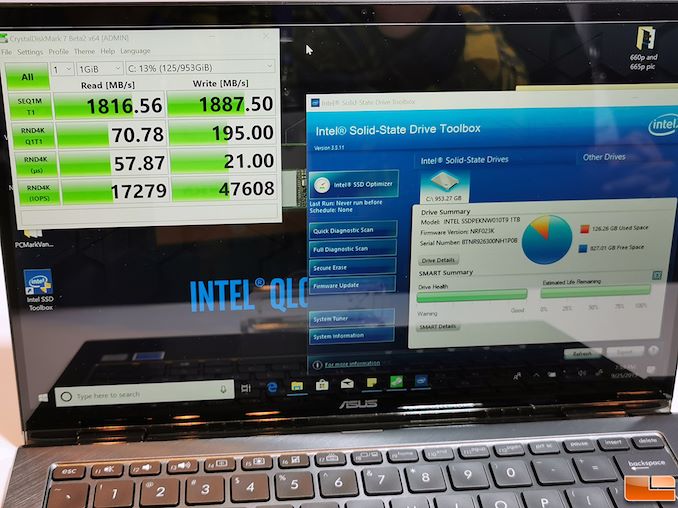

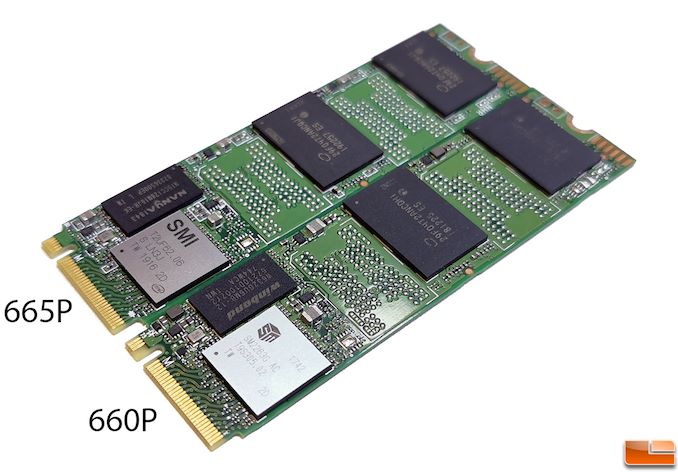

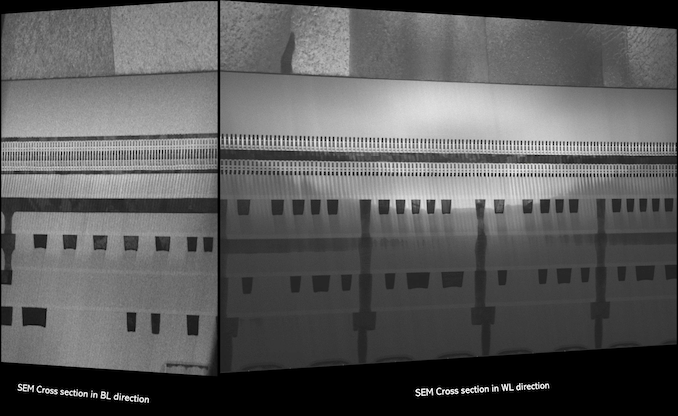
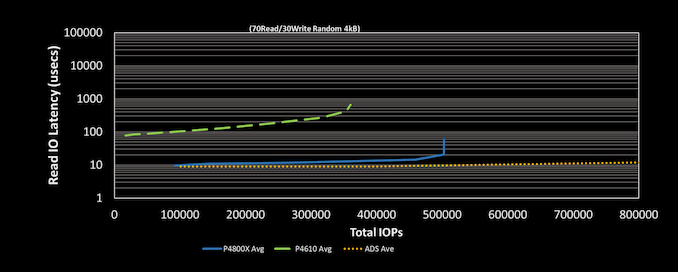
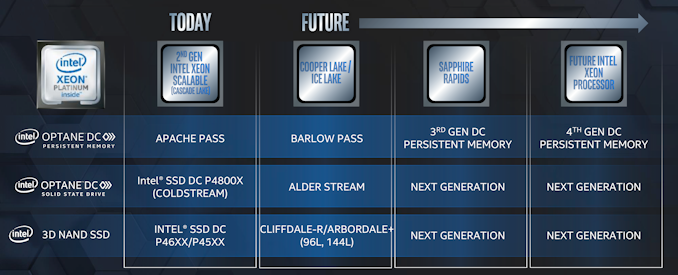

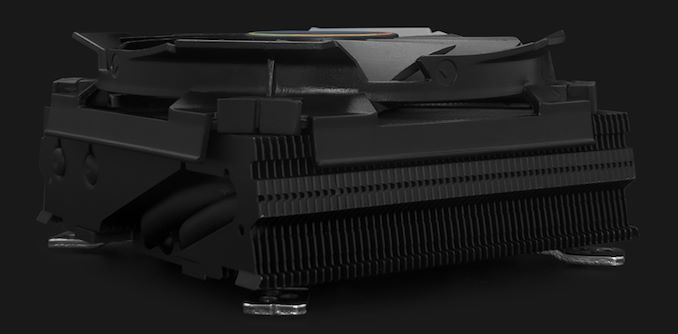
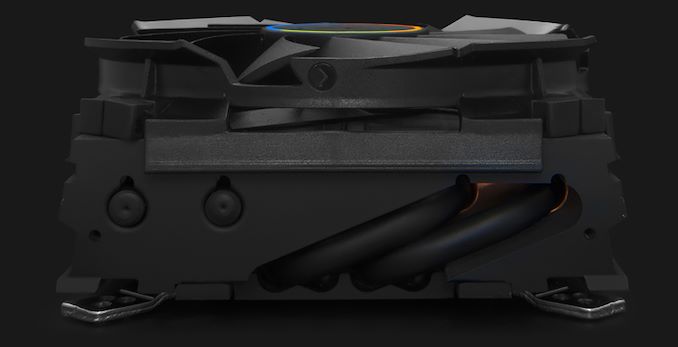
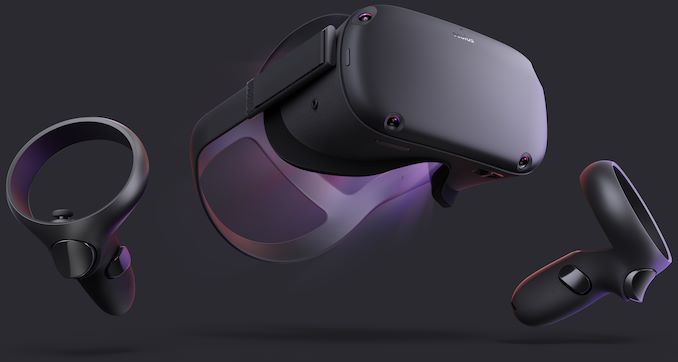
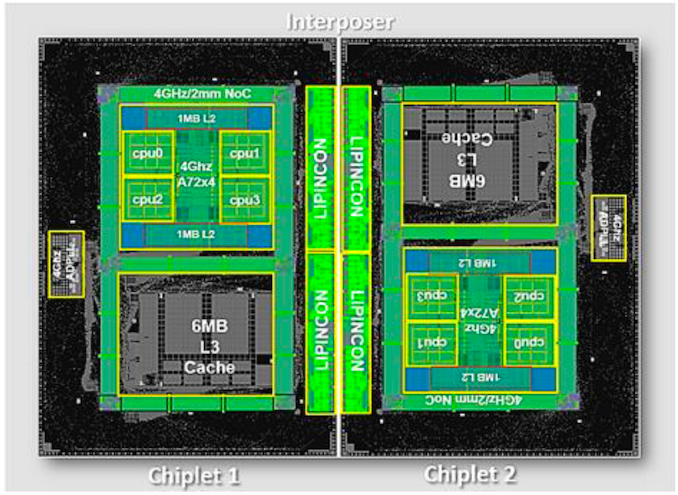

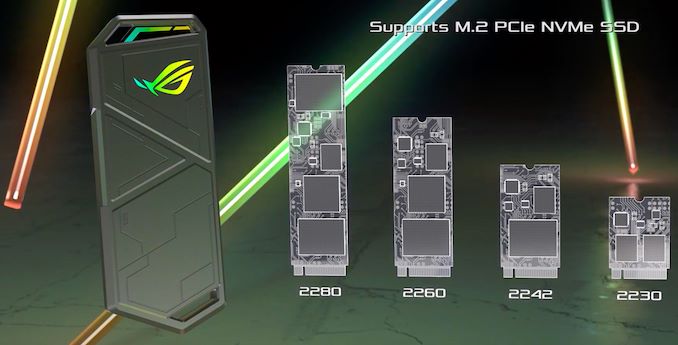
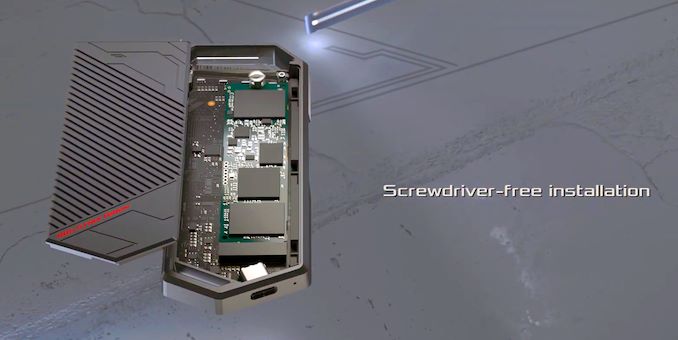

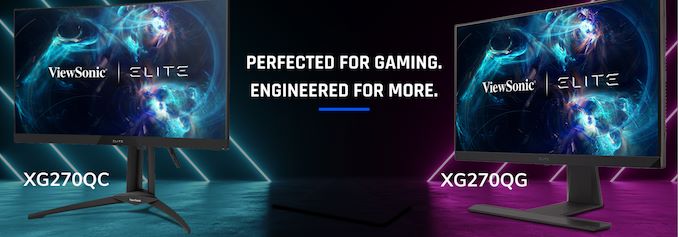
















Bookmarks